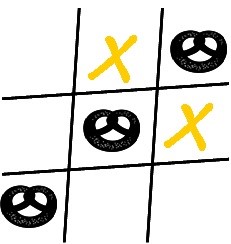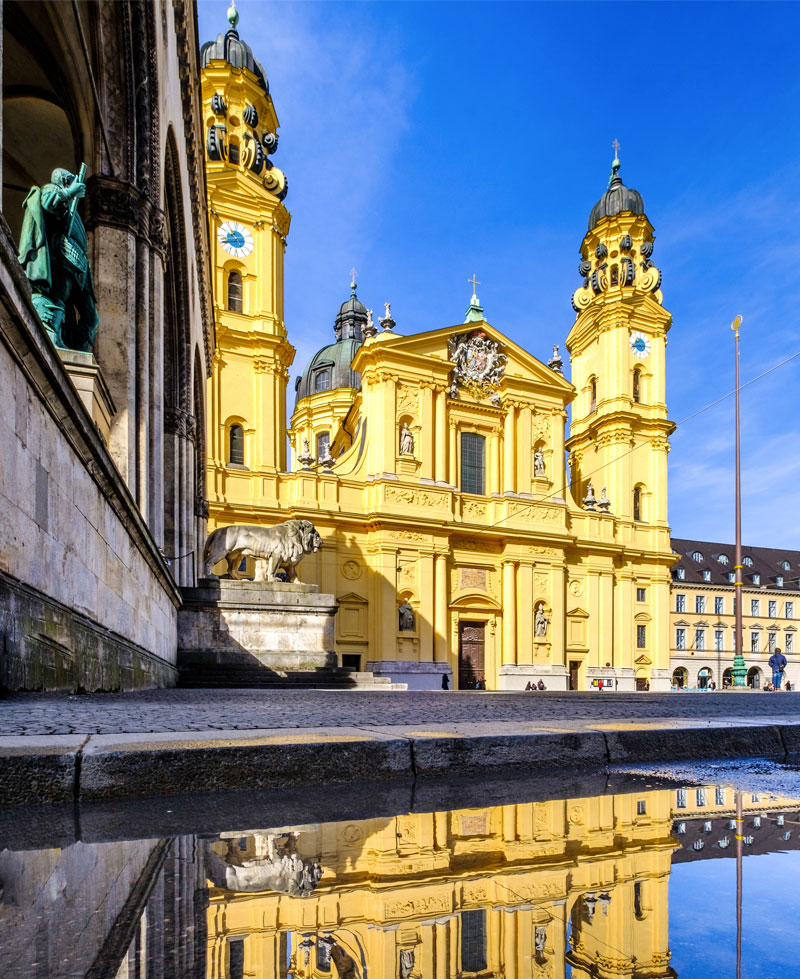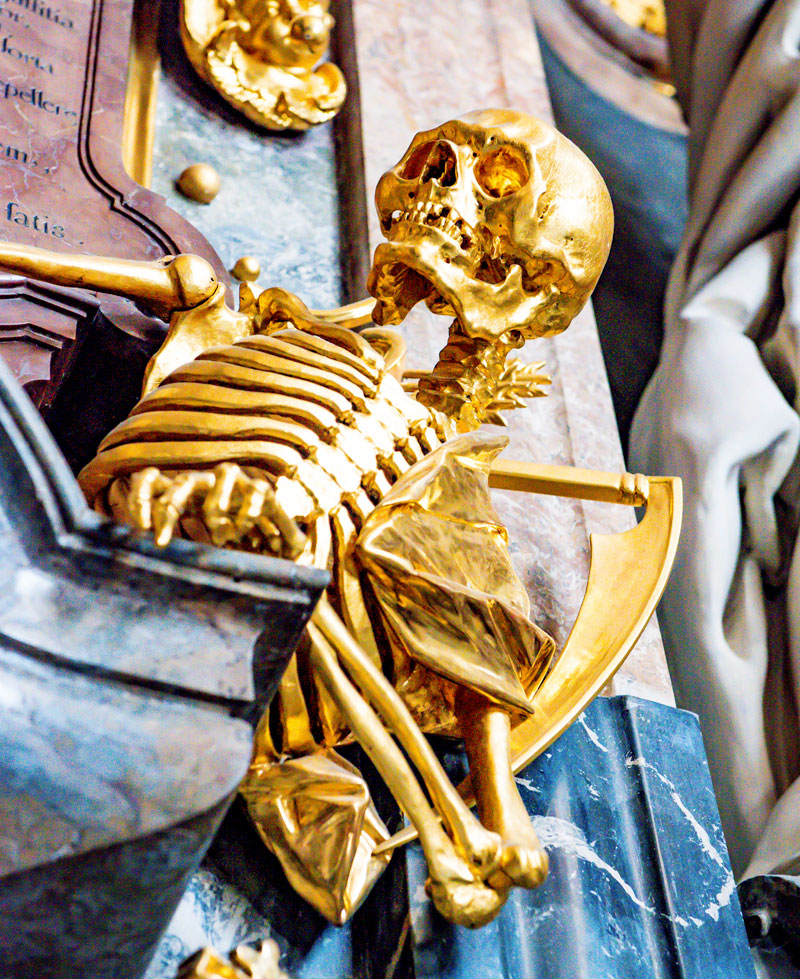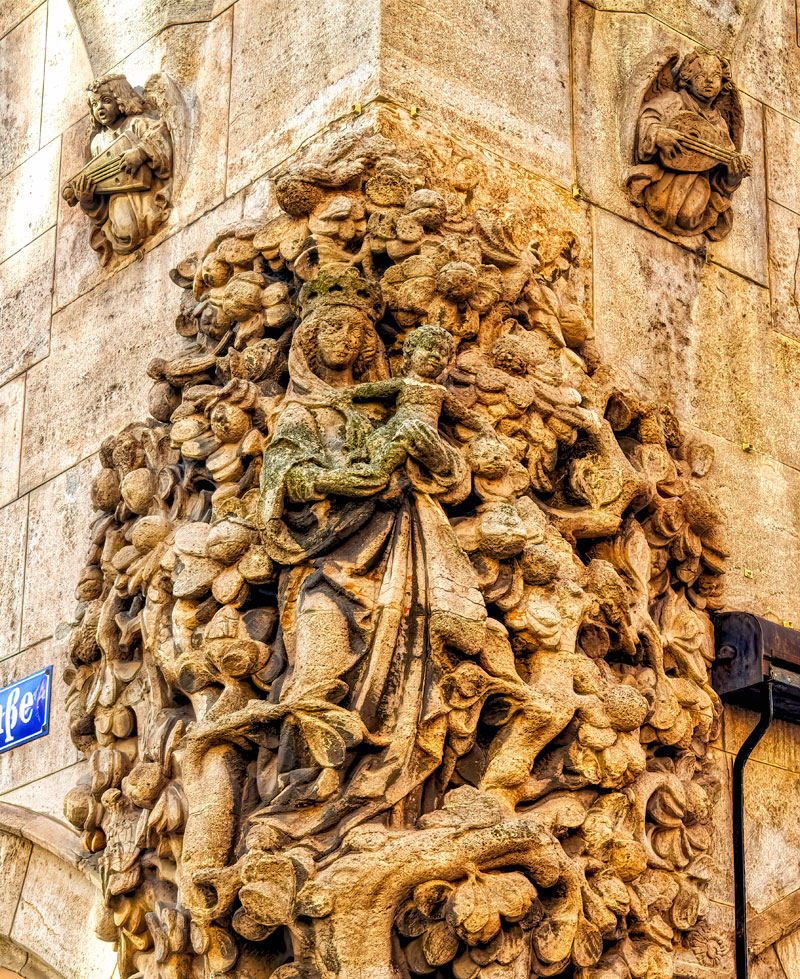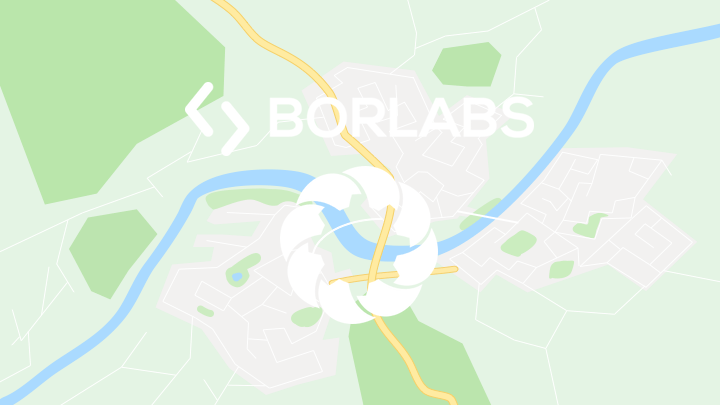A powerful work of art!
Munich in the Baroque
| Marvel at the opulence of Baroque Munich, which our city was able to preserve for our time despite wartime destruction in ornate facades, playful little temples, illusionistic ceiling frescoes, cosy courtyards, gilded statues of saints, and harmonious house Madonnas. | |
 |
Immerse yourself in the baroque world of the 17th and 18th centuries between the Hofgarten, Odeonsplatz, Promenadeplatz, Hackenviertel and Sendlinger Tor. |
|
Don't be surprised by the occasional skull among the cute baroque angels, but find out with me how important the awareness of one's own transience was in these otherwise rather dazzling times. |
Impressions
Description:
On this tour, we'll be transported back to the time when the royal seat of Munich became a center of Baroque splendor in the 17th and 18th centuries. What drove the absolutist rulers of Bavaria at that time to attract the most expensive and exquisite artists to decorate their palaces and parks? And why was it so important for the Catholic Church, in particular, to shine through the magnificent and opulent furnishings of its buildings? While we address these questions, we can happily allow ourselves to be distracted by the powerful yet playful facades of the churches and aristocratic palaces. This will help us experience this exciting period between the early Baroque and the Rococo as a Gesamtkunstwerk (total work of art) of the most diverse art forms. A guided tour for connoisseurs! Read more
Finally, the Thirty Years' War is over, and Bavaria is slowly recovering from those terrible years marked by fighting, occupation, plague, famine, and renunciation. Now, something entirely new can emerge from the ruins, a new style that expresses the regained joy of life in a variety of ways: in music and dance, fashion, painting, and even architecture: the Baroque era had dawned!
Initially, it was Italian influence that washed over the Alps thanks to the young Princess Henriette Adelaide of Savoy, giving Munich a completely new face with its Mediterranean architecture. The Theatinerkirche on Odeonsplatz, now almost sunny yellow, is a prime example. In the next generation, the absolutist rulers of the House of Wittelsbach oriented themselves toward the France of the Sun King, who, with Versailles, also set standards for Nymphenburg Palace and its park. But it wasn't only outside the city that lavish gardens were being built; the city center was also home to royal strolls, particularly in the Hofgarten, where today you can watch boules players in their evening competitions in a very relaxed atmosphere.
Naturally, as a more or less influential nobleman, you don't hold back, show off your possessions, and have the prestigious front of your new palace decorated by renowned stucco artists. Thankfully, today, on our tour, we can admire the not-so-cheap investments at the time, for example, at the Preysing Palace or the Holnstein Palace, and delight in the flourishes, cherubs, and ornate decor. It doesn't matter if the noble offspring wasn't born according to their social standing, but merely the product of an amorous liaison between a princely sovereign and his mistress. The need for representation remained unabated.
Above all, however, it was the Catholic Church that strove to demonstrate its power and influence through countless new construction and renovation projects, thus dissuading even the last doubters from austere Protestantism. At that time, the Baroque architectural style was an excellent marketing tool, conveying a vibrant and colorful image. And as you stumble from one church to the next in Munich, you can also marvel at how the initially heavy and rather colorless Italian style evolved into the light Baroque architecture so typical of Bavaria.
The Bavarian artists quickly learned the sophisticated techniques from their Italian and Flemish colleagues and matured into world-renowned architects, sculptors, and stucco artists. Most notably, of course, the Asam brothers, who created an impressive calling card for themselves with their private church and the adjoining house – naturally one of the highlights of our tour today.
The most important things in brief:
Meeting point:
in the Hofgarten, under the Hofgarten Temple; the entrance is best from Odeonsplatz
public transport:
3 minutes from Odeonsplatz, which you can reach with the U3 / U6 or with the museum line bus 100
Duration:
Can be booked as a 2- or 3-hour tour
Distance:
approx. 2-3 km
My tips for before and after our tour:
If you're particularly interested in the Baroque and Rococo periods, I can highly recommend our Bavarian National Museum. With its magnificent collections on this topic, it will perfectly complement our tour. Or a visit to the Cuvilliés Theater in the Residence, a true jewel from the Rococo period. Of course, it's also fun to take a trip out to Nymphenburg Palace after our tour, armed with your newfound knowledge of the city center, to continue reveling in the Baroque splendor, especially in the park palaces. I'd be happy to accompany you there upon request! And for those who prefer indulgence in culture to enjoyment, there are plenty of opportunities to do so in the city center before or after our tour, for example, in one of the cozy restaurants in the Asamhöfe district, just behind the Asam Church. Unfortunately, I can't guarantee that the food served will be on Baroque porcelain!
Frequently asked questions:
Will we see works by artists other than the Asam brothers on our walk?
Can the interior rooms and furnishings also be viewed during this tour?
Can I have a snack during the tour?
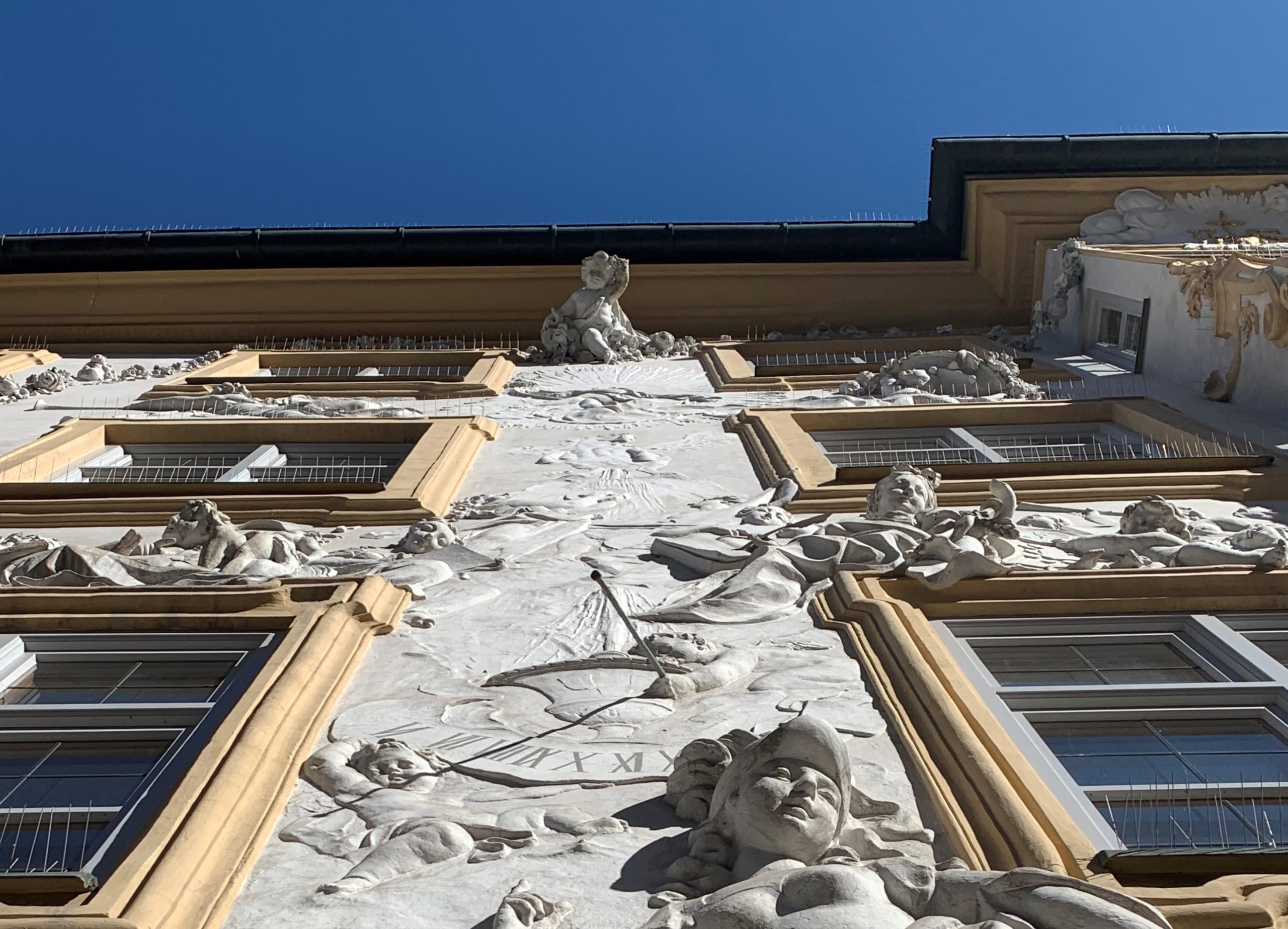
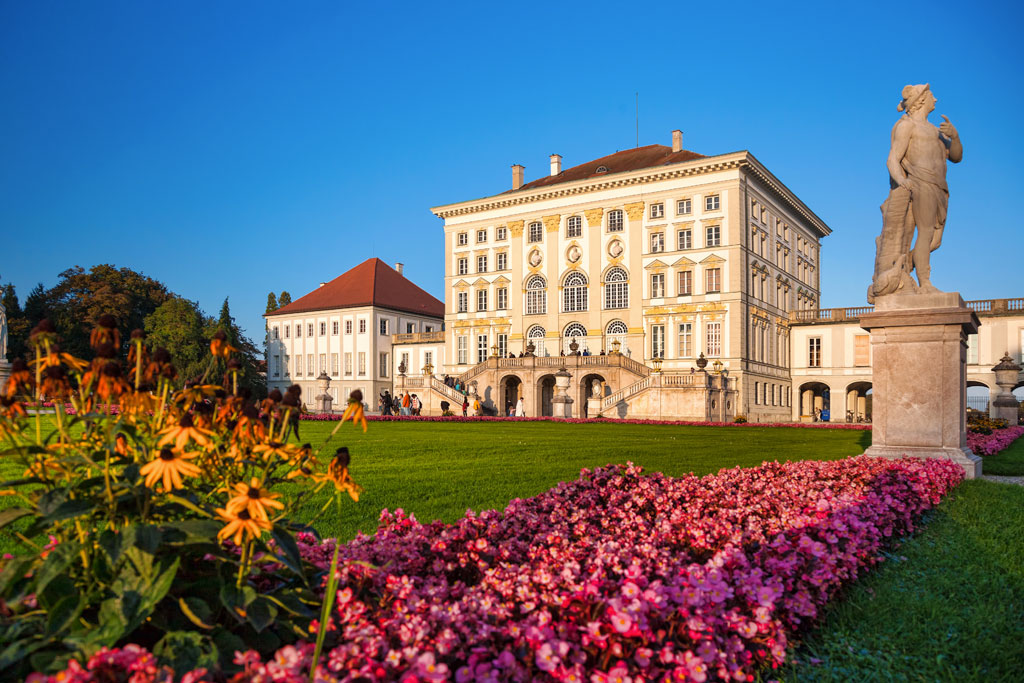
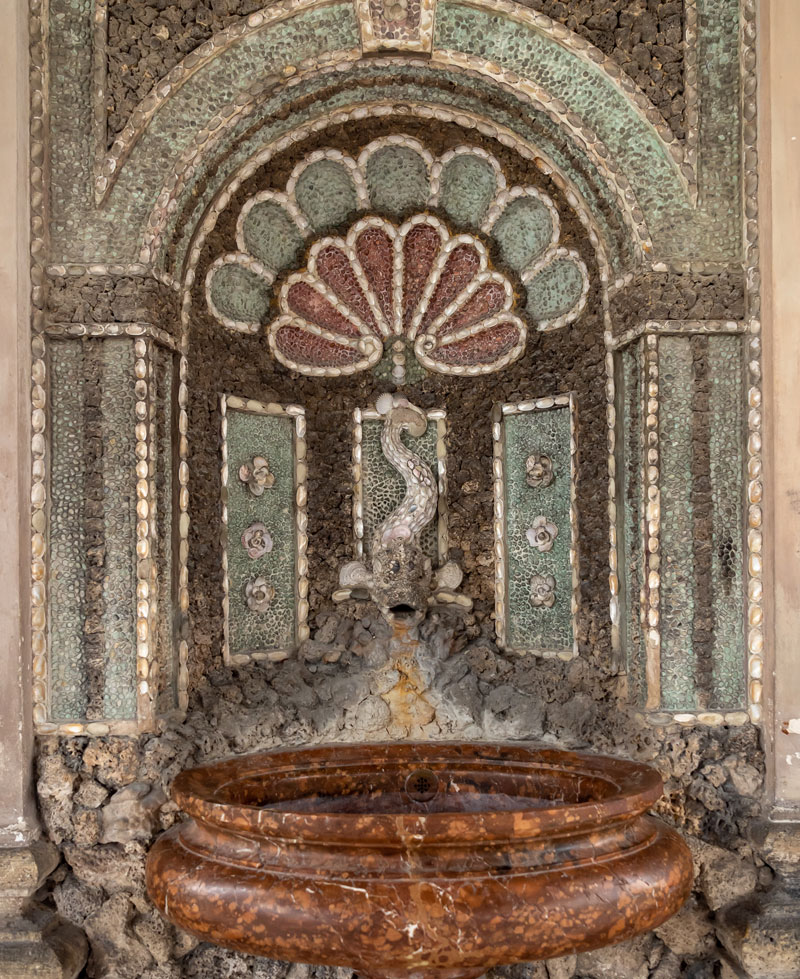
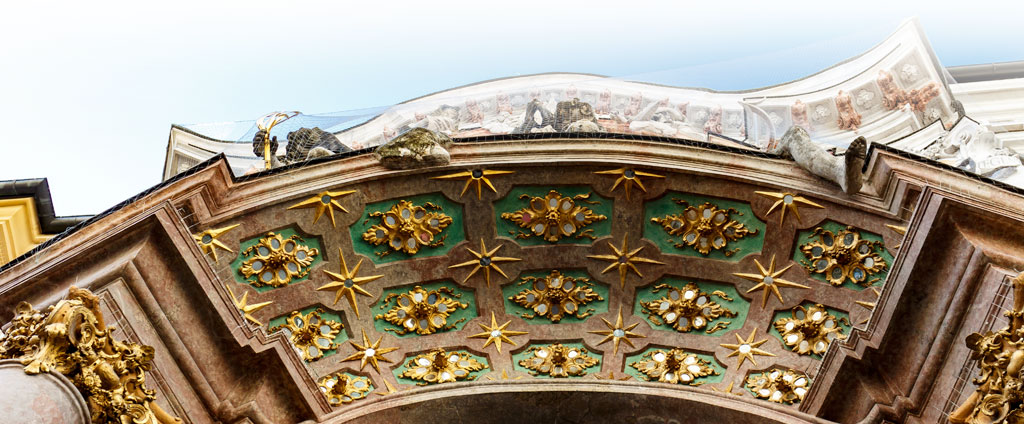
Still questions?
Write to me or just call me:
Grit Ranft
and the Dachau Concentration Camp Memorial
